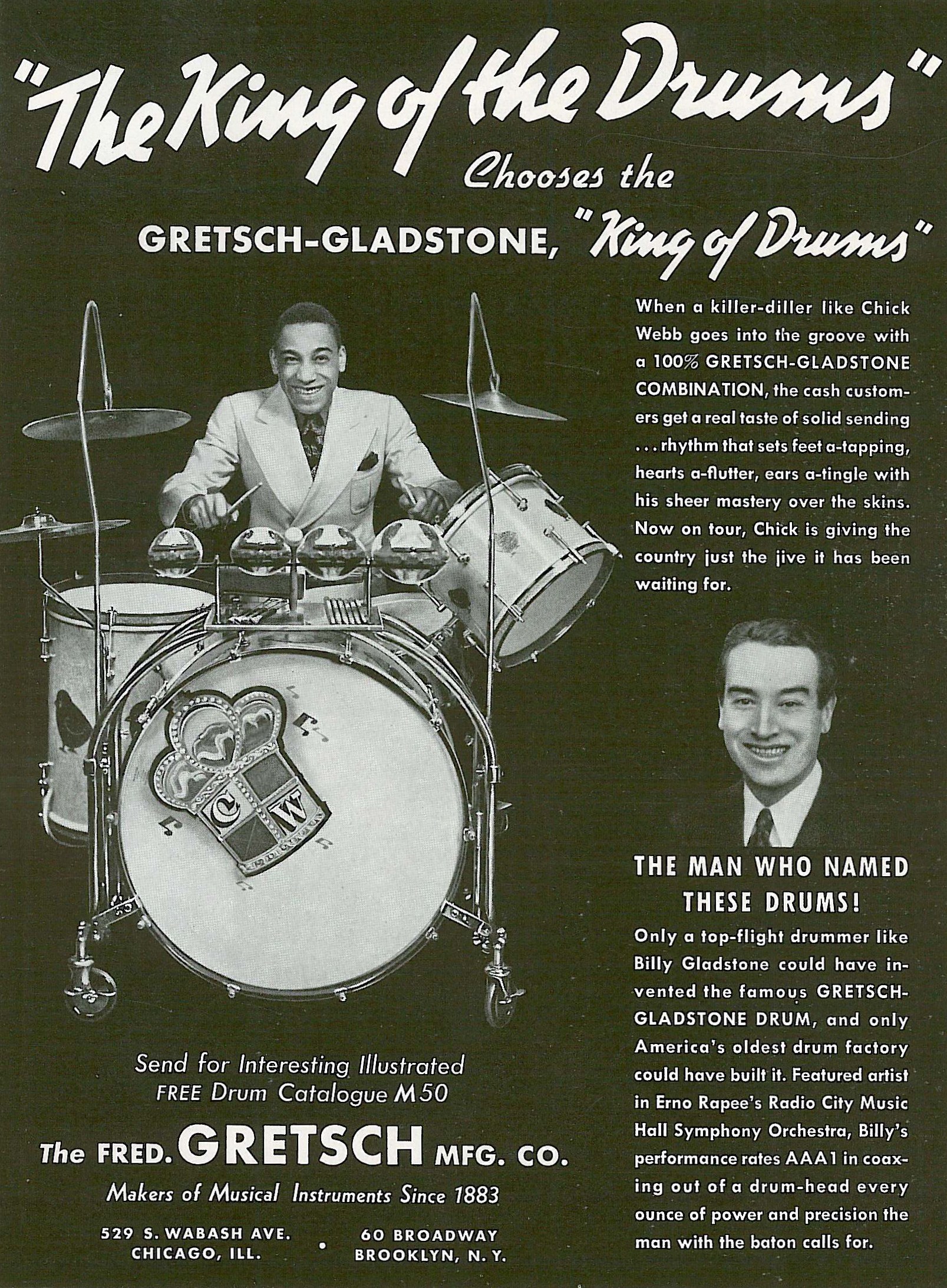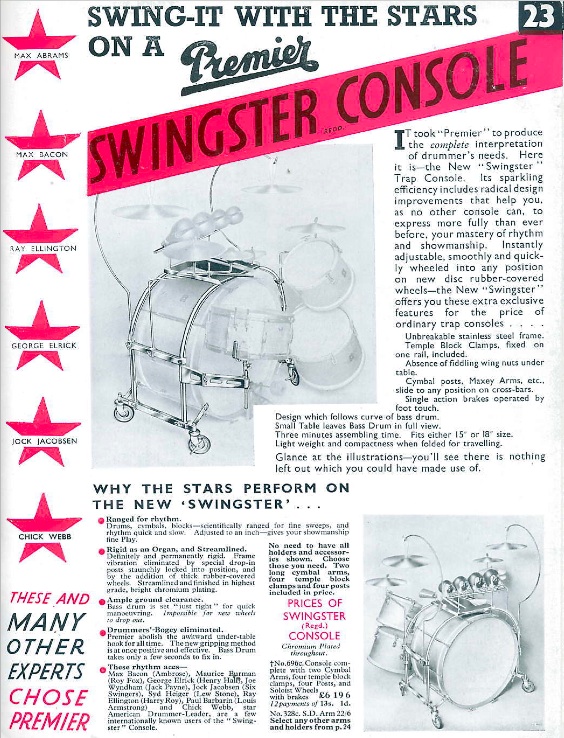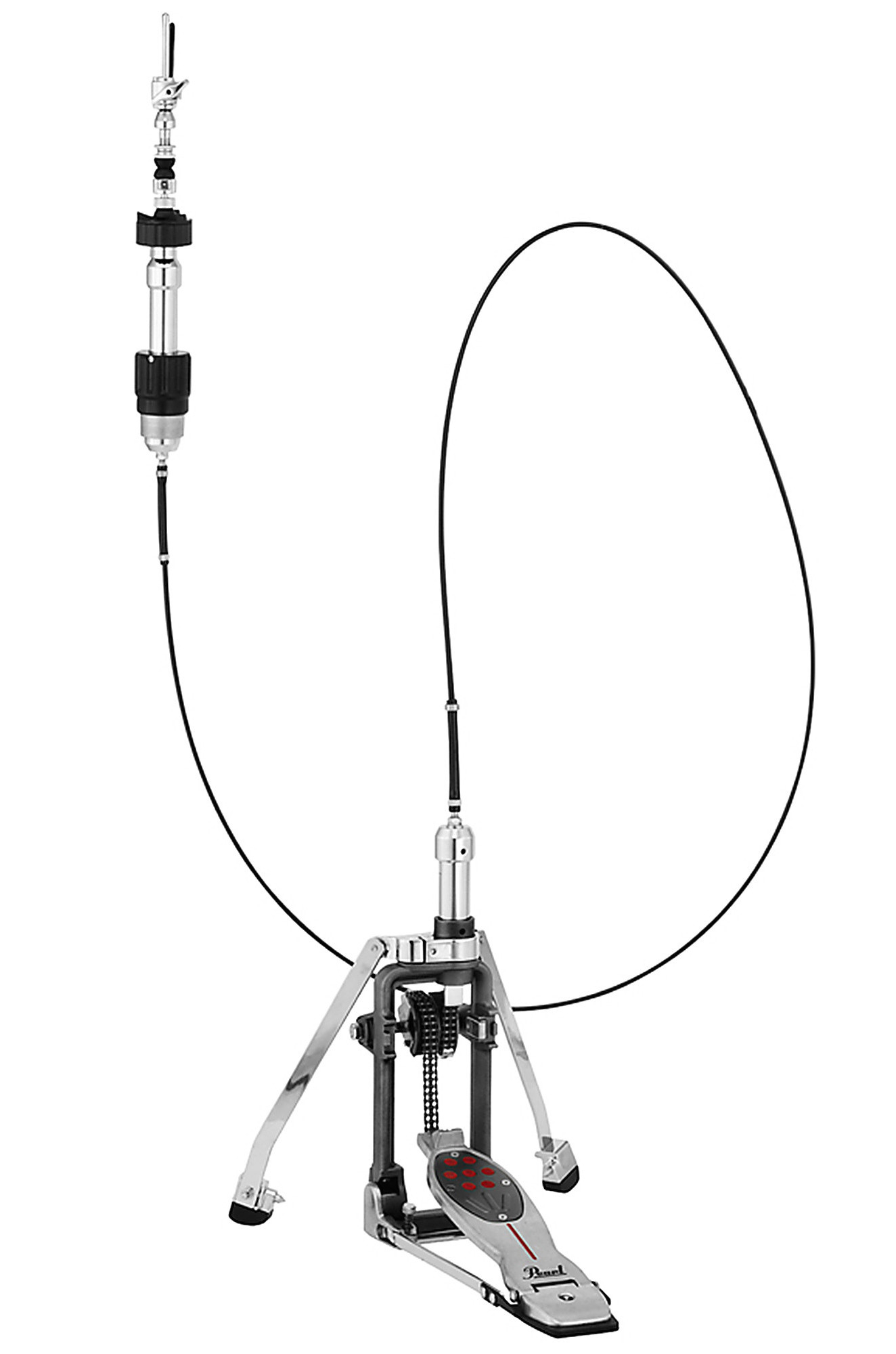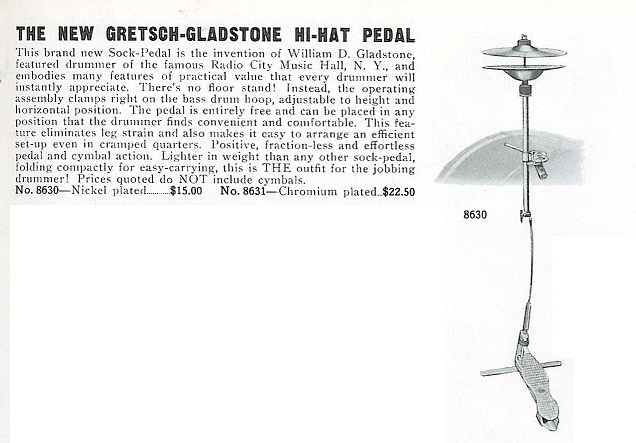So you think that state-of-the-art rack system you emptied your bank account for firmly puts you among the pinnacle of 22nd Century Drummers, right? After all, it is equipped with a remote cable Hi Hat, so it's the “Latest and Greatest.” Would you believe your great grandfather, the guy you got those drummin' genes from, beat you to the punch by nearly a hundred years?
Rack systems, also known as “Consoles,” first appeared in major drum company catalogues in the early 1920s. Initially, they were light-hearted affairs, designed to hold a limited amount of accessories. As drum sets increased in size, so too did the consoles. As “acts” were numerous in the early days of theatre, someone had the bright idea of installing wheels for quick stage exits. Like you, drummers in those days were eager to have the “Latest and Greatest” equipment.
Paramount among those was the inimitable William Henry “Chick” Webb. A virtual unknown, Webb literally rolled onto the stage at Harlem's Savoy Ballroom on May 15, 1927 to participate in a battle of the bands against the formidable competition of “King” Oliver and Fletcher Henderson's Bands. To the amazement of everyone, he vanquished his opponents making him, in Duke Ellington's words, “Battle Mad.” On May 11th 1937, Little Chick upped the ante at the Savoy by challenging Benny Goodman with drummer Gene Krupa to a “Battle of the Century”. “Chick and Gene Krupa really went at it. Before the night was over, Gene stood up on Benny’s stand and bowed to Chick, as if to say, 'You’re the King.'”1 Webb became an overnight sensation and the Gretsch Drum Company was quick to notice. Pictured on the cover of the 1939 Gretsch catalogue, the “King of Drums” is praised with “Drummers and critics alike hail Chick as one of the truly great swing stylists of all times.” The cover photo depicts an exuberant Webb seated behind his “Chick” Gretsch Gladstones mounted on the “New Gretsch Drummers' Wheeled Console.”
Page 48 of the catalogue offers this description of the console, “Every instrument and trap that a drummer could want or need finds its place on this new and supremely convenient console. It even holds your bass drum (24 in. to 30 in. diameter) doing away entirely with the need of spurs. Not only that, but so flexible is its accommodation, that you can shift the equipment to suite your own style, and have every article of your equipment held securely in correct playing position at exactly the spot where you want it to be. Being mounted on rubber composition wheels, the whole assembly can be rolled smoothly, quietly to or from the job, and while you are playing, the efficient wheel-locks hold it steady as a rock! It consists of a rigid tubular steel frame, immensely strong yet comparatively light in weight. It takes down quickly and easily for traveling and packs compactly. No. 8770 – Drummers' Wheeled Trap Console, complete with the following accessories (other accessories are extras, as quoted below): Trap Tray, 4 cymbal arms complete with holders, trap rail with holders for 5 temple blocks, bass drum clamps and trap rail. In chromium plated finish only...Each $80.00 (about $1380 today).” Extra accessories included a Snare Drum Holder, Tom Tom Holder, Woodblock and Cowbell Holder, Gong Ring (not pictured), and Gooseneck Cymbal Holder (not pictured). The complete console illustrated cost $106.00 (about $1830 today). Gretsch was actually importing these consoles from the Premier Drum Company in London England. Gretsch modified the consoles by replacing the stock wooden trap table supplied by Premier, with a Billy Gladstone invention, “a transparent (Plexiglass) trap table which covers the drummers whole outfit but does not conceal it from the audience. Audiences are very curious about drummers and their gadgets. They like to see everything, fascinated by the drummer’s equipment and performance.”
Your great grandfather wasn't yet finished with his equipment. “The New Gretsch-Gladstone Hi-Hat Pedal”, precursor to today's cable remote hi hat, is pictured on page 41 of the 1939 Gretsch Catalogue. The description reads, “This brand new Sock-Pedal is the invention of William D. Gladstone, featured drummer for the famous Radio City Music Hall. N.Y. and embodies many features of practical value that every drummer will instantly appreciate. There's no floor stand! Instead the operating assembly clamps right on the bass drum hoop, adjustable to height and horizontal position. The pedal is entirely free and can be placed in any position that the drummer finds convenient and comfortable. This feature eliminates leg strain and also makes it easy to arrange an efficient set-up even in cramped quarters. Positive, friction-less and effortless pedal and cymbal action. Lighter in weight than any other sock-pedal, folding compactly for easy-carrying, the is THE outfit for the jobbing drummer! Prices quoted do NOT include cymbals. No. 8630 - Nickle plated_$15.00 No. 8631 – Chromium plated_$22.50 (about $390 today).” Gladstone's concern for limited stage area prompted this invention, but as noted in the description, the pedal and hi hat “can be placed in any position that the drummer finds convenient and comfortable.” Though initially not intended to be an auxiliary hi hat, that application was universally accepted when it was “reinvented” in the 1990's. The first generation remote hi hat had a short shelf life though, only appearing in the following 1941 Gretsch catalogue. It also appeared in the 1930's Paul Beuscher Instrument Catalogue in Paris France. Page 38 of the catalogue (translated to English), under the title “More Jazz Accessories” the following description is given for an almost identical cable hi hat, “6CB New Hi Hat pedal attaching to the bass drum, flexible transmission. Versatile and fast ... 160 Francs. (Converting Francs to Dollars would be $22.70, virtually the same price as Gretsch).”
While great grandpa's music was vastly different, the equipment remains unchanged. Personally I am looking forward to the reinvention of the “Electro-Jazz” pictured on page 35 of the 1930s Paul Beuscher Instrument Catalogue. While my right foot plays a combination of bass drum and cymbal, my left foot plays snare, wood block, and/or another cymbal, electronically switched...all leaving my hands free for writing. Are you listening DW?
Chet Falzerano has been published by Centerstream Publications with his books Charlie Watts' Favorite Drummers, Chick Webb, The Little Giant, Billy Gladstone, and Gretsch Drums The Legacy of “That Great Gretsch Sound”. Falzerano also co-authored chapters in the Centerstream publication Guide to Vintage Drums by John Aldridge and the Hal Leonard publication, Star Sets by Jon Cohan. He has been published in the following magazines: DRUM!, Classic Drummer, Modern Drummer, Percussive Notes, Not So Modern Drummer, and North South Traders CIVIL War.










